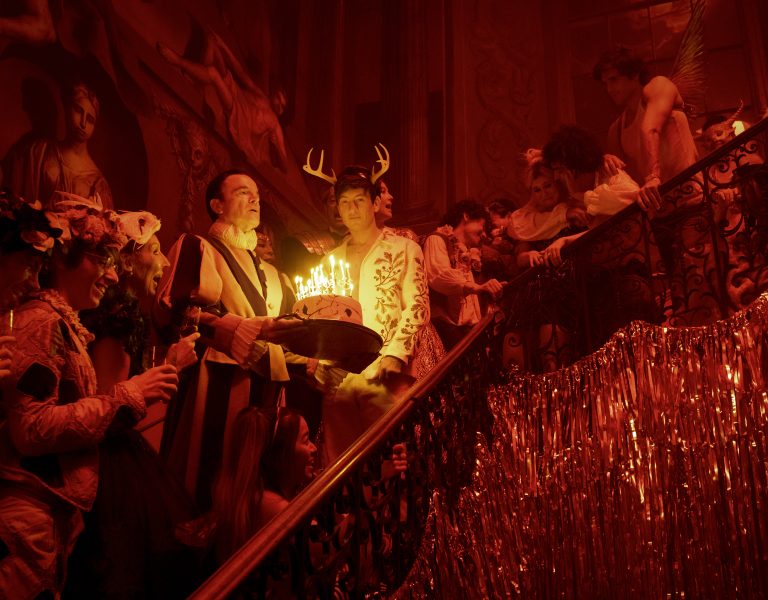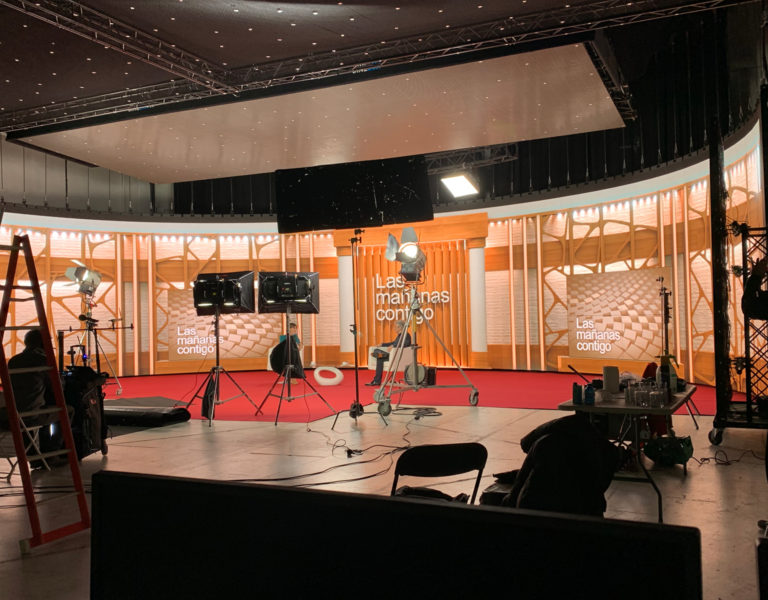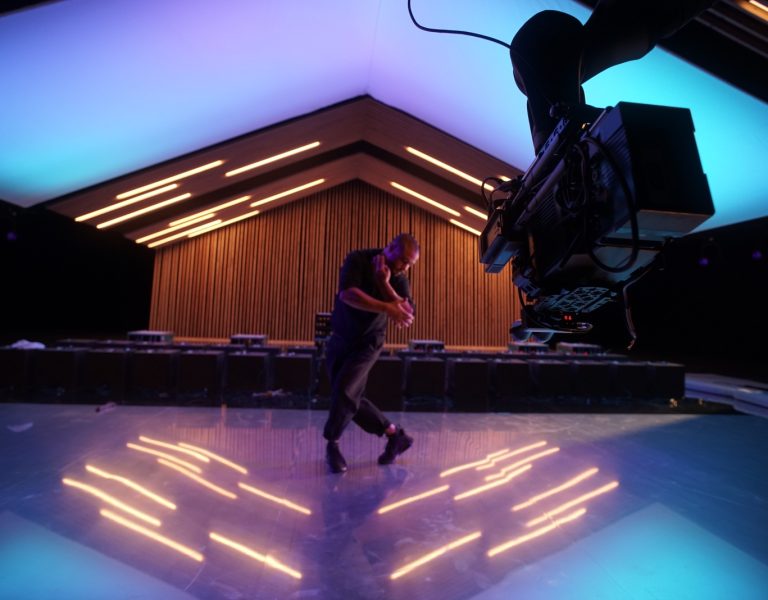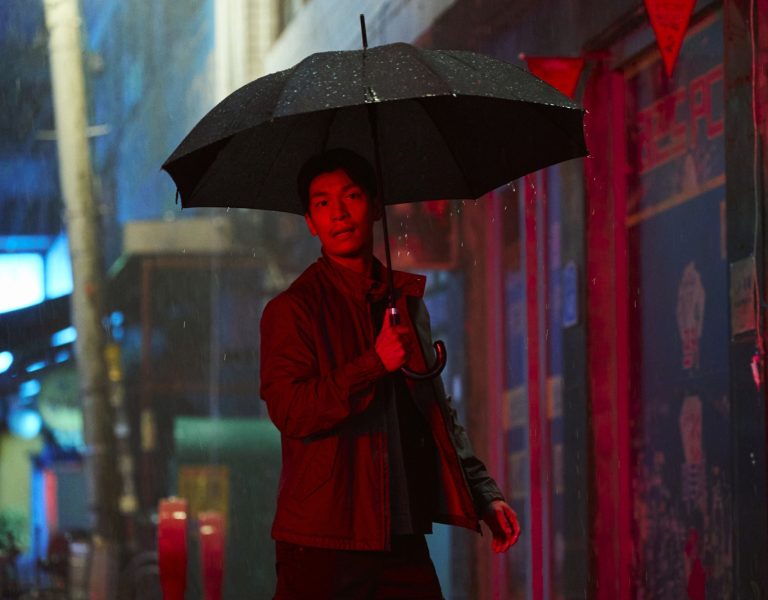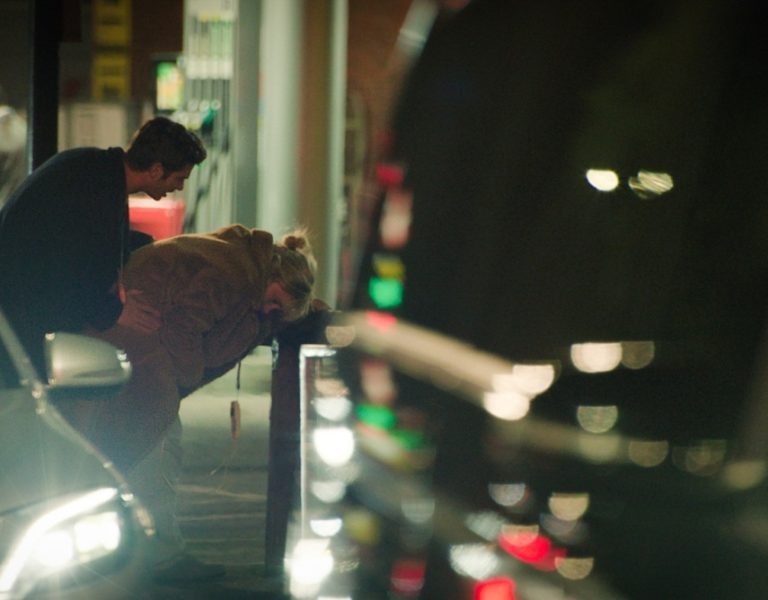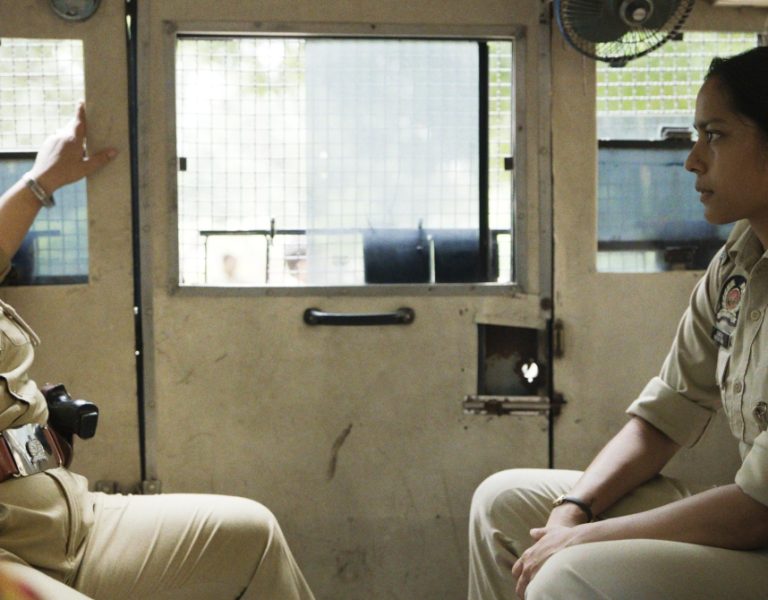SWEET SIMPLICTY
Cinematographer Simona Susnea shares how keeping things simple on Sweet Sue helped elevate both the story and build the look of Leo Leigh’s wry comedy-drama.
Sweet Sue, Leo Leigh’s fiction feature debut, is a funny – if occasionally rather uncomfortable – tale of a fifty-something woman finding her feet again on the dating scene. After Sue (Maggie O’Neill) meets biker Ron (Tony Pitts) at her brother’s funeral, she soon finds herself in a war of words with his wannabe influencer son, Anthony (a show-stealing Harry Trevaldwyn).
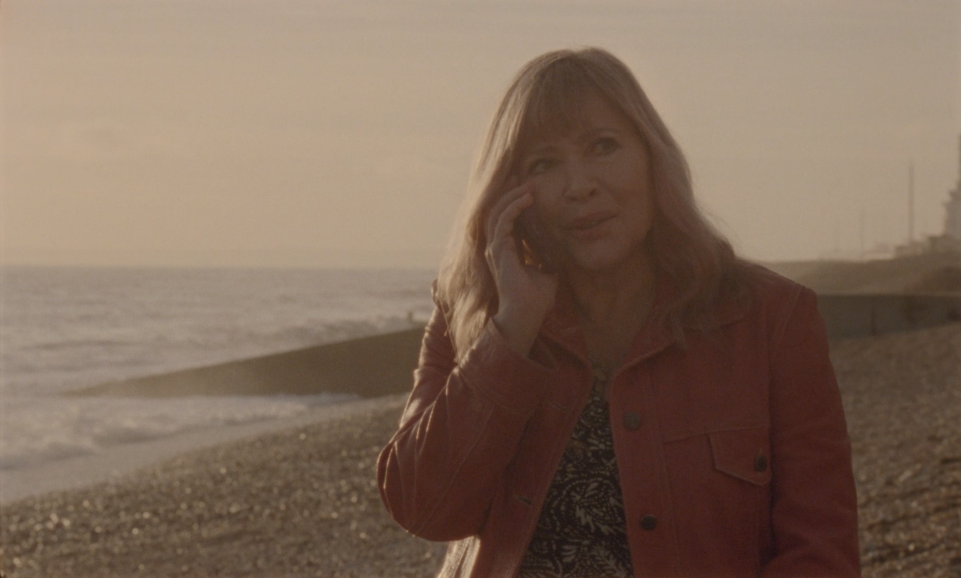
The director is the son of visionary filmmaker Mike Leigh and you don’t need to watch for long to see that the apple hasn’t fallen far from the tree. Leo has even adopted his dad’s unorthodox approach to screenwriting; before her interview, cinematographer Simona Susnea was given a 23-page script with no dialogue, just a short description of each scene.
“It was written in a way that you could get a sense of what the story is and most importantly to me, it gave you a very clear idea of who the characters are,” she remarks. “What was also interesting for me is that I could picture an atmosphere for each scene and that gave me a strong starting point in building the visual world.”

Over a six-week prep Leigh conducted rehearsals with the cast, throughout which he would develop the film’s dialogue. His team would record this dialogue and transcribe it into the script.
“This was my first time working like this,” Susnea admits. “It’s an interesting and intense way of working. I felt connected to the characters and I liked the story-world. It was very intuitive and Leo was updating me on how the script developed, so I knew about the new nuances that weren’t in the first material I read.”
It sounds like a fast and perhaps daunting process, but the cinematographer was unfazed. Despite the lack of script in those early days, she was able to make selections of references for each scene. She highlights 20th Century Women (dir. Mike Mills, cin. Sean Porter) as the only film reference for its tone, atmosphere and approach to movement, as well as Robby Müller NSC BVK’s polaroid work. Edward Hopper’s framing was another key influence: “I felt a sense of intimacy in his paintings, but also a distance which felt appropriate for our story.”
Other references were the photography of Gregory Crewdson and William Eggleston – especially the latter’s black-and-white stills – which share a similar tone and overall style. “They have had an influence on my work since I was a stills photographer,” she says.
What united her references was a sense of nostalgia or melancholy. Although set in present-day North-East London, Sweet Sue feels like it belongs to a different era – partly thanks to production and costume design, but also to its analogue aesthetic. Leigh had wanted to shoot on film from the beginning and Susnea had extensive experience with the medium, although Sweet Sue would be her first 16mm feature.
“When Leo suggested shooting on film, I wasn’t afraid of how it would impact our workflow – in fact, I knew that it would bring something interesting to it, because there was this idea of restriction around the film,” she explains. “The budget was small, the timeframe was short, and I feel like the more limitations you have, the more likely it is that something creatively interesting will arise.”
Sweet Sue was captured on the Arriflex SR3, apart from the occasional scene self-shot by influencer Anthony on an iPhone 13 Pro. Filming in November and December with low-level daylight meant Kodak Vision3 500T/7219 was a natural choice, complemented by Vision3 250D/5207.
The DP embraced the film grain and liked the look it lent the project. “I didn’t want the 16mm look to be altered in post and made to feel modern, I wanted to keep the qualities that come directly from the medium,” she says. “Film brought authenticity, which went hand in hand with the production, costume design and make-up.”
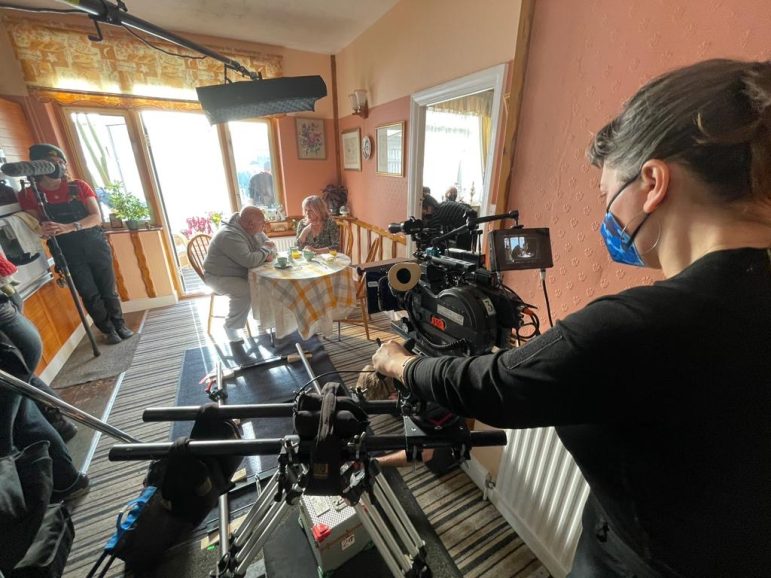
As well as a shared love for celluloid capture, Susnea and Leigh also found synergy in their storytelling techniques. Mixing objective and subjective camerawork to convey the loneliness and intimacy of Sue’s world was an interesting decision.
“We combined these locked-off static frames with handheld and only went to close-up when we felt it was necessary in the story,” the cinematographer notes. “I felt the two ways of shooting were a really good balance. We either moved the camera (handheld, zooms, track and sliders) or just held it locked off and left the performance to tell the story. Zooms and tracking shots were used to infuse a sense of subjectivity and slight surrealism. The locked-off shots have a lot more meaning when you build this strong contrast in the camera language.”
Shooting on 35mm Panavision Primos gave Susnea the ideal mix of softness and sharpness which worked well with the 16mm film aesthetic. She notes: “16mm doesn’t have that much resolution when it comes to wide shots, so it’s a bit of a gamble when you choose these lenses and how soft these wide shots feel. I felt like that softness gave it a timeless look.”
When it came to lighting, Susnea worked closely with gaffer Bill Rae Smith to make the most of their budget. She describes 95% of the film as using soft LED light through the windows, complemented by a 5K ARRI Fresnel for sunlight or a sodium vapour streetlight effect at night.
In the grade, Susnea worked with colourist Max Hoxton to further enhance the style they’d developed during filming. Film processing was undertaken by the Kodak Film Lab and scanning by Digital Orchard.
Pivotal to the production process for DP and director was keeping a simplicity to their approach – something Susnea enjoyed and hopes to bring onto other projects. “There was a simplicity [to this project] that was key to everything – to framing, lighting, how you tell the story with the camera. When you work on film, you have to be decisive about what you do. I really liked that there was a simplicity around everything, and I think that simplicity doesn’t get in the way of the story.”

